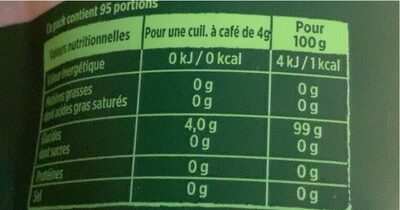Sucre Pure Via SpecialPatisserie - 380 g
This product page is not complete. You can help to complete it by editing it and adding more data from the photos we have, or by taking more photos using the app for Android or iPhone/iPad. Thank you!
×
Barcode: 3329757004442 (EAN / EAN-13)
Quantity: 380 g
Packaging: Bag
Brands: pure via
Categories: Snacks, Sweet snacks, Biscuits and cakes, Sweeteners, Food additives, Pastries, Sugar substitutes, Sugars, Natural sugar substitutes
Labels, certifications, awards:
Green Dot
Stores: carrefour.fr
Countries where sold: France
Matching with your preferences
Report a problem
Data sources
Product added on by kiliweb
Last edit of product page on by jusdekiwi.
Product page also edited by annelotte, chevalstar, date-limite-app, driveoff, duhowpi, ecoscore-impact-estimator, foodofjuanita, foodvisor, garnierkaren, openfoodfacts-contributors, patden, quechoisir, quentinbrd, yuka.sY2b0xO6T85zoF3NwEKvlhwZXOaFnyrfaiz4sG6sm-WWFrbSMeFXuoqmHao, yuka.sY2b0xO6T85zoF3NwEKvlmYaa9zdq2nZNELiqBKW99GOK7rPZehc57LfLqg, yuka.sY2b0xO6T85zoF3NwEKvlmxGd8Ph-hbdbiHWoG2Q3PqEFcb0Wf5o77PaDqs.










